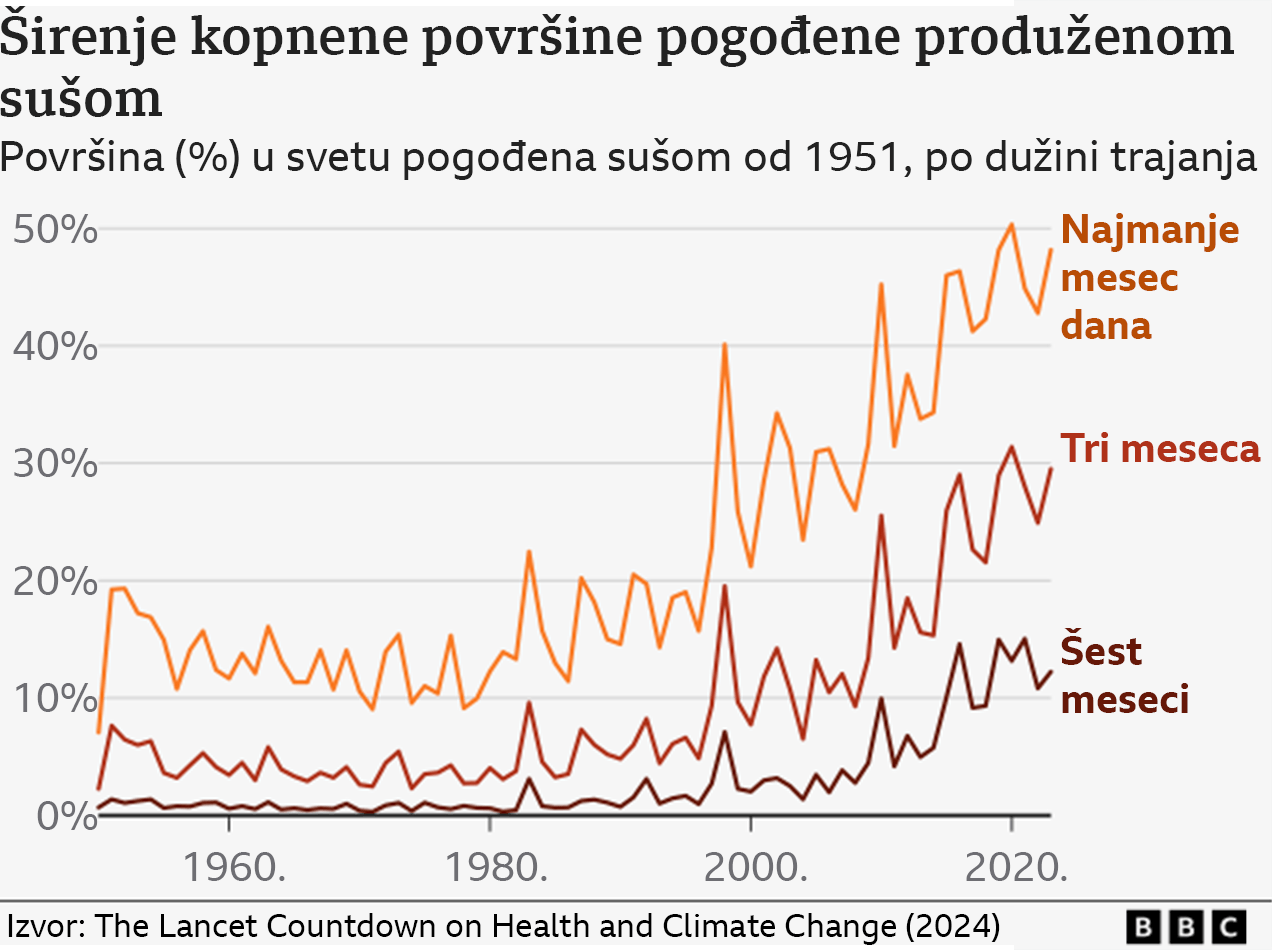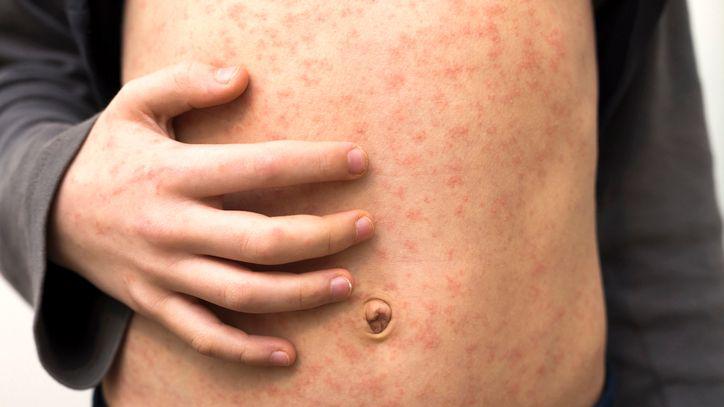The land surface hit drought tripled since the 1980s, reveals a study – BBC News in Serbian

The surface of the land that affects the drought tripled since the 1980s, it is argued in the new report on climate change.
Last year, 48 percent of the land area was hit by extreme drought at least a month, which was a large increase in the 1980s, when the average was 15 percent, the report on the impact of climate change on health annually published by the Medical Magazine Lanset,
Almost a third of the world, 30 percent, was hit by extreme drought for three months or longer in 2023. years, while the average during the 1980s was five percent.
In the new study, some of the latest data on droughts in the world show how quickly they spread the surface that affects this natural disaster.
The drought is considered extreme when during six months, the amount of precipitation is very small or is a very high level of evaporation from plants and land, or it happens at the same time.
This represents an immediate risk of water and sewage, food safety and public health, and can affect energy supply, transport network and economy.
The causes of individual droughts are complex, because there are many different factors that affect the availability of water, from natural weather, to the way people use the land.
But climate change changes global patterns of precipitation because some regions become more inclined to sushi.
The rise of dry periods is especially serious in South America, in the Middle East and on the horn of Africa.
In the Amazon in South America, the drought threatens to change the patterns of weather.
Drought kills trees that encourage rain-cloud formation, which violates delicate balanced rainclays, thus creating a feedback causing additional droughts.

However, while large parts of the land mass are drained, at the same time, extreme precipitation is increased.
In the last 10 years, in 61 percent of the world, an increase in extreme precipitation was recorded compared to the average for the period 1961. until 1990. years.
The connection between drought, floods and global warming is complex.
Due to the high temperatures, evaporation of water from the country increases, which is why periods without rain are even more drier.
But climate change also change precipitation forms.
As the oceans warm up, more water evaporates in the air.
The air is also heated, which means it can keep more moisture.
When this moisture moves above the mainland or united with a storm, there is more intense rain.
The annual report of the LANSET magazine revealed that the impact of climate change on health reaches record levels.
Last year, 151 million people were more than during the 1990s, the problem of food supply, which contributed to malnourishment.
The number of deaths older than 65 years related to the heat also increased by 167 percent compared to the 1990s.
Also, due to higher temperatures and more abundant rains are viruses that transmit mosquitoes.
The number of patients from Denga fever reached a record level, and Denga, malaria and western Nile virus have expanded to areas where they had never been.
Due to the increase in the number of sand storms, millions of people are more than previously exposed to dangerous air pollution.
« The climate quickly changes, » says Marina Romanelo, the executive director of the annual report on climate change of Lanset magazine.
« It changes so that it creates the conditions we are not used to and which our systems cannot be elected. »
For a series of life at 50 degrees, the BBC World Service visited some of the warmest parts of the world, where it was previously high demand for water.
We found that extreme drought and precipitation further make access to the water.
From 2020. year, extreme drought affects agricultural crops in northeastern Syria and parts of Iraq.

In recent years, Hasaka, a city where a million inhabitants live, there are no clean water.
« 20 years ago, there was water in River Habura, but she has been drained because there was no rain, » Osman Gado, head for testing water quality in Hasaki.
« People don’t have access to sweet water. »
And when they don’t have access to water, people dig up wells, but groundwater can be polluted, causing people getting sick.
The city is supplied with drinking water from the wells, which are 25 kilometers away, but they dry up.
Clothes are not washed and children are not bathing regularly, which is why skin diseases and diarrhea are widespread.
« People are ready to kill a neighbor because of the water, » says the Hasake resident for the BBC.
« People are thirsty everyday ».
Last year, 77 percent of land in southern Sudan was hit by drought at least a month, and half of the country was exposed to extreme sushi for at least six months.
At the same time, more than 700,000 people were affected by floods.
« Things get worse, » says the older inhabitants of Njakum.
« When we get into the water, we get sick. And the food we eat is not nutritious enough. »
Njakuma had malaria twice in a few months.
Her family lost his entire herds of cattle during floods last year and now survive from state aid and food they find themselves in nature.
« Eat this is like eating mud, » says Sandej, Njakumin’s husband, while in the flooded area he is looking for underground fitting trees.
During drought, rivers and lakes are drying up, and the land fries, which means that it hardens and loses herbal cover.
If severe rain follows, the earth cannot absorb precipitation, so the water is basin and causes torrential floods.
« Plants can adapt to extreme dries to some extent, but floods really violate their physiology, » says Romanello.
« It’s really bad for food supply and agriculture security. »
If we do not reduce greenhouse gas emissions and stop further growth of global temperature, we can expect even more droughts and more intensive precipitation.
Previous 2023. was the warmest year since the record was kept.
« We are still in a position we can somehow be able to adapt to climatic changes.
« But the changes will reach the point to be the limit of our possibilities.
« Then we will see many inevitable consequences, » says Romanello.
« The more we allow global temperature growth, it will be above ».
The BBC in Serbian is from now on and on the morning, follow us Here.
Follow us on Facebook, Twitter, Instagram, Jutjubu and Vajiberu. If you have a topic suggestion for us please contact (Email Protected)







